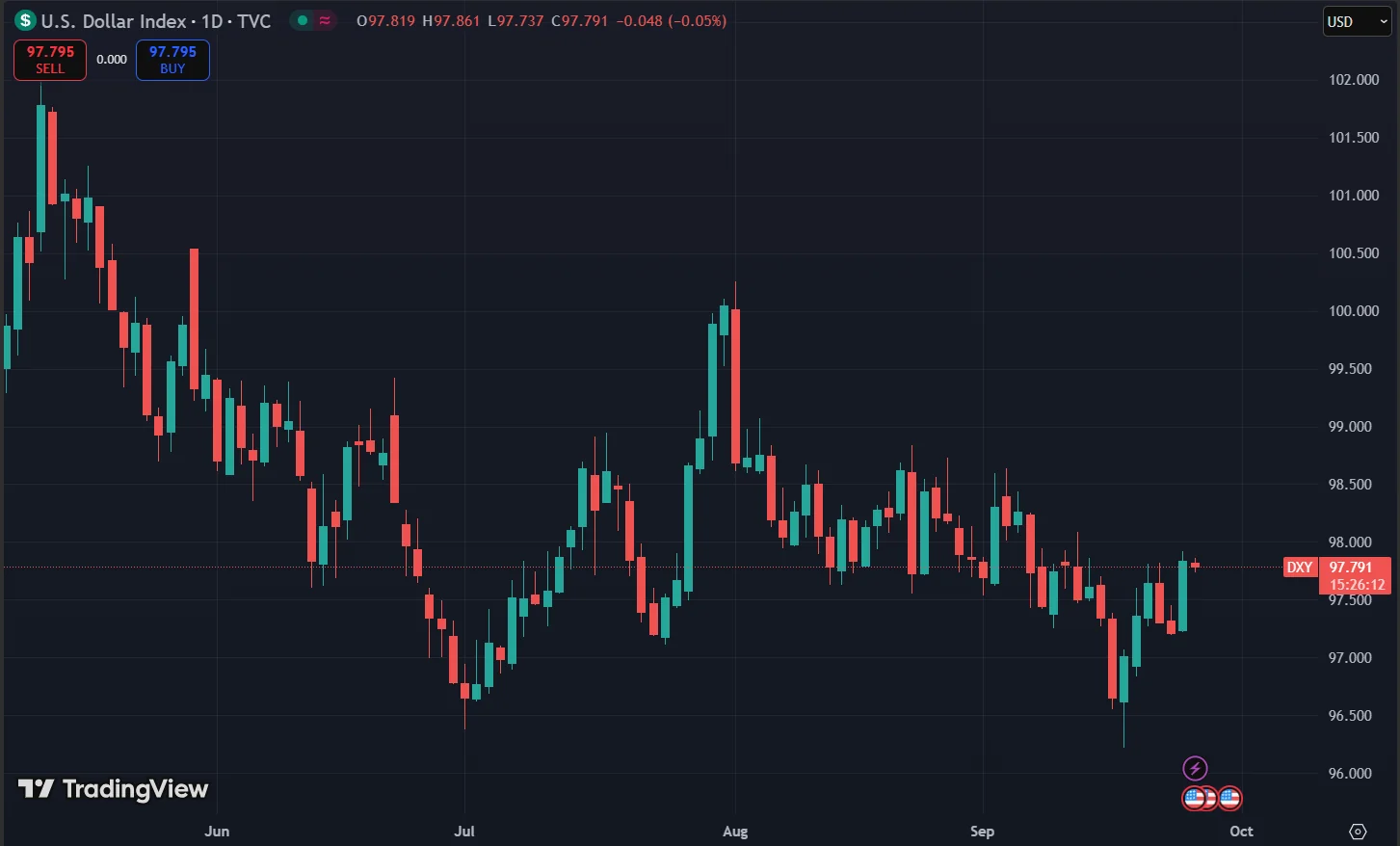According to QCP Capital, the U.S. Federal Reserve’s recent 0.25 percentage point “insurance cut” helped stabilize short-term rates but triggered a sell-off in long-term Treasuries, pushing yields higher. At the same time, Fed Chair Jerome Powell’s cautious remarks provided support for the U.S. Dollar Index (DXY), which climbed 1.63% from a low of 97.22, MarketWatch data shows.
The dollar’s rebound has led both gold and the S&P 500 index to ease after setting record highs on September 23. Derek Lim, Head of Research at trading firm Caladan, noted that gold’s reversal likely reflects profit-taking or shifts in hedging flows. However, he emphasized that any potential positive impact on Bitcoin will be muted if the dollar continues to strengthen.

Another key factor is the August Core PCE inflation data, which many analysts expect will shape near-term monetary policy expectations. A higher-than-expected reading could force markets to reprice rate-cut prospects, putting pressure on equities, gold, and Bitcoin. Conversely, a softer print would strengthen the dovish outlook, providing support for risk assets.
Ryan McMillin, Chief Investment Officer at Merkle Tree, said the Fed’s “measured dovishness” has helped stabilize sentiment, most notably in reduced bond market volatility. He expects this backdrop to allow Bitcoin to break out of its September slump and potentially set new highs in the fourth quarter, a period historically favorable for cryptocurrencies.
According to CoinGecko data, Bitcoin is currently trading at around $111,800, down less than 1% on the day.






